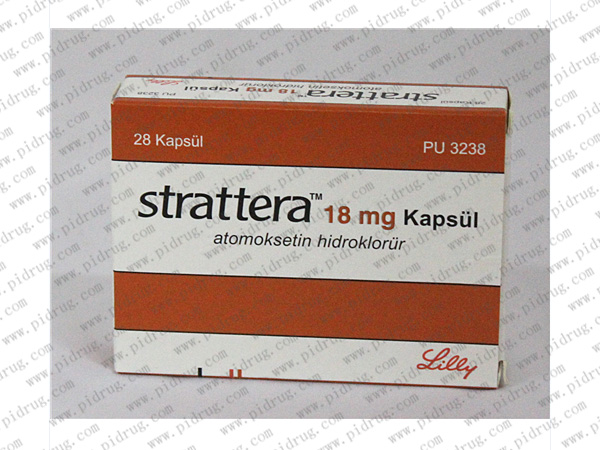药品名称:
阿托西汀Strattera
药品别名:托莫西汀;Tomoxetine;Atomoxetine hydrochloride;Strattera
英 文 名:阿托西汀Strattera
药品价格:
HK$ 请咨询微信客服
研发公司:
适 用 症:适用于注意缺陷障碍(ADHD)的治疗。
型号规格:胶囊装,每粒含有效成份10mg/18mg/25mg/40mg/60mg/80mg/100mg多种规格,每瓶30粒装。
药品详情:
【阿托西汀Strattera简述】
阿托西汀Strattera又名托莫西汀;Tomoxetine;Atomoxetine hydrochloride;Strattera等,本品可选择性抑制去甲肾上腺上腺上腺素的突触前运转,增强去甲肾上腺上腺上腺素功能,从而改善ADHD的症状,间接促进认知的完成和注意力的集中。对其他神经递质受体(如胆碱能、组胺、多巴胺、5-羟色胺以及α-肾上腺素受体) 几乎无亲和力。
【阿托西汀Strattera适应症】
本品适用于适用于注意缺陷障碍(ADHD)的治疗。
【阿托西汀Strattera规格】
本品为胶囊装,每粒含有效成份10mg/18mg/25mg/40mg/60mg/80mg/100mg多种规格,每瓶30粒装。
【阿托西汀Strattera服用方法】
体重70kg以下的儿童和青少年,阿托西汀的初始剂量约为每日0.5mg/kg,最少需经过3天方可增加至约每日1.2mg/kg的目标剂量,每日1次晨服或在早晨和下午/傍晚分2次眼用。最大日剂量不超过1.4mg/kg或100mg。对于体重在70kg及以上的儿童、青少年及成人,阿托西汀的初始剂量约为每日40mg,最少经过3天方可增加至约每日80mg的目标剂量,每日1次晨服或在早晨和下午/傍晚分2次服用。疗效不明显者用药2~4周后,可增加至最大日剂量100mg。阿托西汀可单服或与食物同服。肝功能中度损伤者,剂量降至正常剂量的50%,严重肝功能障碍者,剂量降至正常剂量的25%。
【阿托西汀Strattera注意事项】
1.阿托西汀不得与单胺氧化化酶抑制剂(MAOI)联用,在停用MAOI 2周后方可使用。
2.与氟西汀、帕罗西汀或奎尼丁等CYP2D6抑制剂联用时需调整阿托西汀剂量。
3.可增加肝毒性的风险,肝脏疾病患者慎用。中、重度肝功能不全者及CYP2D6代谢酶缺乏者应酌情减量。
4.6岁以下儿童及老年患者的阿托西汀安全性和疗效尚未明确。
5.阿托西汀可使血压升高和心率加快,高血压、心动过速、心血管或脑血管疾病患者慎用。阿托西汀也可引起直立性低血压,低血压或有低血压倾向的患者慎用。
6.使用沙丁胺醇或其他β2受体激动剂治疗者慎用。
7.哺乳期妇女慎用阿托西汀。
8.代谢能力弱者、有药物依赖史者慎用。
9.阿托西汀可引起尿潴留,尿潴留或肾功能异常者慎用。
【阿托西汀Strattera 不良反应】
阿托西汀可致严重肝损伤、皮肤瘙痒、黄疸、尿色深、右上腹部压痛、流行性感冒样症状。
注:药品如有新包装,以新包装为准。以上资讯来源于网络或由高等医药院校的学生志愿者翻译(如有错漏,请帮忙指正),仅供医护人员内部讨论,不作任何用药依据,具体用药指引,请咨询主治医师。
如您发现本网站有文字编辑或内容错误,请点击此处发送(需要安装有foxmail或outlook支持),
或发邮件至:info@pidrug.com,香港济民药业感谢您的到访!
欢迎您添加香港济民药业微信,或在公众号内留言。



